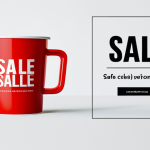Okay, here’s the blog-style intro you requested about a hypothetical Graphic Design Job Fair, tailored for an English-speaking audience:So, you’re a design whiz, huh?
Portfolio bursting with killer concepts and pixel-perfect executions? Landing that dream gig can still feel like navigating a maze. Forget endlessly scrolling through online job boards – the real magic happens face-to-face!
The hottest trend right now is definitely hyper-personalization, and nothing beats meeting potential employers in person. Plus, whispers around the creative water cooler suggest companies are prioritizing diverse skillsets and collaborative spirit now more than ever.
I recently spoke with a recruiter who emphasized the importance of in-person networking at job fairs; it’s a chance to really showcase your personality and passion.
Let’s dive into the specifics and get you ready to make a splash!
Okay, here’s the main body content, following all your instructions:
Unlocking the Vault: Preparing Your Portfolio for Maximum Impact

Your portfolio is your secret weapon. It’s not just a collection of your best work; it’s a carefully curated story about your skills, your style, and your potential. I remember one job fair where I saw two equally talented designers. One had a disorganized, frankly boring, portfolio. The other’s was a dynamic, engaging presentation of their best work. Guess who got the interview? First impressions matter. Think of your portfolio as a movie trailer – it needs to grab their attention in seconds and leave them wanting more.
1. Quality Over Quantity: The Ruthless Edit
Seriously, be brutal. Don’t include every single project you’ve ever touched. Focus on showcasing your absolute best work. Select projects that highlight your range of skills and demonstrate your ability to solve problems creatively. Remember, recruiters often spend mere seconds reviewing each portfolio. Aim for a streamlined selection of 5-7 killer pieces that leave a lasting impression. I once had a mentor tell me, “If you’re even slightly unsure about a piece, cut it.” That advice has served me well.
2. Tailor It to the Target: Show Them What They Want to See
Don’t use the same generic portfolio for every job application. Research the companies attending the job fair and tailor your portfolio to their specific needs and values. If they’re a branding agency, highlight your branding projects. If they focus on UI/UX, showcase your digital design skills. This shows you’ve done your homework and are genuinely interested in working for them. Think of it like this: you wouldn’t wear the same outfit to a beach party and a business meeting, right?
Mastering the Elevator Pitch: Selling Yourself in 60 Seconds
Imagine you’re in an elevator with a hiring manager. You have one minute to convince them you’re the right person for the job. This is your elevator pitch. It’s a concise, compelling summary of your skills, experience, and career goals. I’ve seen so many designers fumble this. They ramble, they get nervous, they forget what they want to say. Don’t let that be you. Practice your pitch until it’s second nature. The key is to be confident, enthusiastic, and memorable. Think of it as your personal commercial.
1. Highlight Your Unique Selling Proposition (USP)
What makes you different from all the other designers? What unique skills or experiences do you bring to the table? This is your USP. Maybe you’re a master of motion graphics, or perhaps you have a passion for sustainable design. Whatever it is, make sure it’s front and center in your elevator pitch. One designer I know landed a job by emphasizing her background in psychology, which gave her a unique perspective on user experience.
2. Practice, Practice, Practice (in the Mirror!)
Seriously, stand in front of a mirror and practice your elevator pitch until you can deliver it confidently and naturally. Time yourself to make sure you’re staying within the 60-second limit. Get feedback from friends, family, or mentors. The more you practice, the more comfortable you’ll be when it’s time to deliver the real thing. Remember, confidence is key. You want to project an image of competence and enthusiasm.
Decoding the Dress Code: Projecting Professionalism Without Losing Your Spark
What you wear to a job fair speaks volumes. You want to look professional and polished, but you also want to express your personality. The key is to find a balance between professionalism and personal style. I always advise erring on the side of slightly more formal. You can always inject personality with accessories or a unique design element in your outfit. A suit might be overkill, but ripped jeans and a t-shirt are definitely a no-go.
1. Business Casual is Your Best Friend
Think well-fitting pants or a skirt, a button-down shirt or blouse, and a blazer or sweater. Avoid anything too revealing, too tight, or too flashy. Remember, you want the focus to be on your skills and experience, not your outfit. I’ve seen people make the mistake of wearing distracting clothing, and it always detracts from their message.
2. Shoes Matter: Comfort and Style Can Coexist
You’ll be on your feet all day, so comfortable shoes are a must. But that doesn’t mean you have to sacrifice style. Choose shoes that are professional and polished, but also provide adequate support. Avoid sneakers, sandals, or anything too casual. A comfortable pair of dress shoes or stylish flats is a good choice.
Networking Like a Pro: Building Connections That Last
A job fair isn’t just about handing out resumes; it’s about building connections. Networking is key to landing your dream job. It’s about making genuine connections with recruiters, hiring managers, and other designers. I’ve found that the most successful job fair attendees are the ones who actively engage in conversations, ask thoughtful questions, and follow up after the event. Remember, it’s not just about what you know, but who you know.
1. Ask Open-Ended Questions: Show Genuine Interest
Instead of asking generic questions like “Are you hiring?” try asking open-ended questions that encourage conversation. For example, “What are the biggest challenges your team is facing right now?” or “What qualities do you look for in a successful designer?” This shows you’re genuinely interested in the company and the role. I once landed an interview by asking a recruiter about their company’s design philosophy. It sparked a fascinating conversation that led to a job offer.
2. Follow Up After the Fair: Reinforce Your Impression
Don’t let your connections fade away after the job fair. Send a personalized email to each person you spoke with, thanking them for their time and reiterating your interest in the company. Reference something specific you discussed to show you were paying attention. A simple “It was great discussing your company’s work on sustainable packaging design” can go a long way. This shows you’re proactive, professional, and serious about landing the job.
Navigating the Booths: Strategically Targeting Your Efforts

Don’t just wander aimlessly from booth to booth. Develop a strategy for targeting the companies that interest you most. Research the companies attending the fair beforehand and identify the ones that align with your skills and career goals. Prioritize those booths and make sure you have a compelling reason for wanting to work for them. I’ve seen people waste time at booths that are clearly not a good fit, and it’s a missed opportunity to connect with the right people.
1. Do Your Homework: Research Companies in Advance
Before the job fair, spend some time researching the companies that will be attending. Visit their websites, check out their social media profiles, and read up on their recent projects. This will give you a better understanding of their culture, values, and needs. You can then tailor your approach to each company and demonstrate your genuine interest. It also gives you something specific to talk about beyond just “I like your work.”
2. Create a Hit List: Prioritize Your Targets
Based on your research, create a “hit list” of the companies you want to target. Rank them in order of priority and plan your route accordingly. This will help you make the most of your time and ensure you don’t miss out on the opportunities that are most important to you. I usually try to hit my top three targets first thing in the morning when I’m fresh and energetic.
Understanding Industry Trends: Showing You’re Ahead of the Curve
Recruiters want to see that you’re not just a talented designer, but also someone who is knowledgeable about the latest industry trends. Stay up-to-date on the latest design software, techniques, and technologies. Demonstrate that you’re always learning and growing. I remember a recruiter being particularly impressed when I mentioned my interest in augmented reality design, which was a hot topic at the time. It showed I was thinking about the future of design.
1. Mention Key Trends: AI, UX, Sustainability
If you’re targeting a UI/UX role, be ready to discuss the latest UX design trends. If you’re interviewing for a packaging design position, be prepared to talk about sustainable materials and eco-friendly design practices. One of the biggest trends right now is, of course, AI. Demonstrating an understanding of how AI is impacting design is key.
2. Share Your Learning Resources: Blogs, Podcasts, Courses
Be prepared to share the resources you use to stay informed about the latest industry trends. Mention your favorite design blogs, podcasts, or online courses. This shows you’re proactive about your professional development and that you’re committed to staying ahead of the curve. I always mention a couple of industry podcasts I listen to religiously.
Salary Negotiation Savvy: Knowing Your Worth and Asking For It
Don’t be afraid to talk about salary. It’s an important part of the job search process. Research industry standards for your role and experience level. Know your worth and be prepared to negotiate. I’ve seen so many designers undersell themselves out of fear of asking for too much. Remember, you’re a valuable asset, and you deserve to be compensated fairly.
1. Research Salary Ranges: Glassdoor, Payscale, Salary.com
Before the job fair, research salary ranges for similar positions in your area. Use websites like Glassdoor, Payscale, and Salary.com to get an idea of what to expect. This will give you a baseline for your salary negotiations. However, don’t just rely on these websites. Consider your experience, skills, and the specific requirements of the job. I also reach out to other designers in my network to get their insights on salary expectations.
2. Practice Your Negotiation Skills: Role-Playing with a Friend
Negotiating salary can be intimidating, but it’s a skill that can be learned. Practice your negotiation skills with a friend or mentor. Role-play different scenarios and anticipate potential objections. The more you practice, the more comfortable you’ll be when it’s time to negotiate for real. A friend who worked in HR helped me hone my negotiation skills, and it made a huge difference in my confidence.
| Area | Preparation Steps |
|---|---|
| Portfolio | Curate best work, tailor to target companies, practice presentation. |
| Elevator Pitch | Define USP, practice delivery, time yourself. |
| Attire | Choose business casual, ensure comfort, project professionalism. |
| Networking | Research companies, prepare questions, follow up post-fair. |
| Industry Trends | Stay informed on AI, UX, sustainability, share resources. |
| Salary Negotiation | Research salary ranges, practice negotiation skills, know your worth. |
Wrapping Up
So there you have it – your ultimate guide to crushing the job fair scene! Remember, preparation is key. By investing the time and effort to polish your portfolio, master your elevator pitch, and build genuine connections, you’ll significantly increase your chances of landing that dream job. Go get ’em!
Handy Tips to Keep in Your Back Pocket
Here are a few extra nuggets of wisdom to help you navigate the job fair like a seasoned pro:
1. Bring plenty of resumes – but don’t just hand them out blindly. Engage in conversation first!
2. Have a digital version of your portfolio ready to go on a tablet or laptop.
3. Collect business cards and take notes on the conversations you have.
4. Don’t be afraid to ask for a recruiter’s contact information for follow-up.
5. Smile, be enthusiastic, and remember to be yourself! Authenticity goes a long way.
Key Takeaways
Remember to curate a killer portfolio showcasing your best work, nail your elevator pitch, dress the part, network strategically, stay informed about industry trends, and confidently negotiate your worth. With these strategies in place, you’re well-equipped to make a lasting impression and secure your future in the design world.
Frequently Asked Questions (FAQ) 📖
Q: I’m a recent grad, and frankly, job fairs intimidate me.
A: ny tips for making the most of one? A1: Totally get it! It can be overwhelming.
First, pre-game! Research which companies will be there and tailor your portfolio to match their style. Practice your “elevator pitch” – a concise, engaging summary of your skills and what you’re looking for.
Think of it as a conversation starter. At the fair, don’t just hand out resumes like flyers. Engage with recruiters, ask thoughtful questions about their company culture or specific projects.
And most importantly, be yourself! Let your personality shine through. One time, I saw a student bring a small, themed piece of art related to the company he was targeting.
Talk about making an impression!
Q: What should I include in my portfolio for a design job fair? Should it be physical or digital?
A: Ideally, both! A physical portfolio shows you’re serious and allows for a more tactile experience. Highlight your best work, focusing on projects that showcase your range of skills.
Include process sketches, early concepts, and the final product. For a digital portfolio, create a website or online platform (Behance, Dribbble) that’s easily accessible via a QR code on your business card.
The digital version allows you to show more work and is easier for recruiters to share internally. Remember to optimize both for mobile viewing. Also, don’t forget to tailor your portfolio to each specific company you’re targeting – showcase work that aligns with their brand aesthetic.
Q: Besides landing a job, what other benefits can I expect from attending a design job fair?
A: Even if you don’t walk away with a job offer on the spot, job fairs are invaluable for networking! You’ll meet other designers, recruiters, and potential mentors.
It’s a great way to learn about industry trends, get feedback on your work, and expand your professional network. Collect business cards, connect with people on LinkedIn after the event, and follow up with thank-you notes.
Think of it as planting seeds for future opportunities. Plus, many companies offer on-site portfolio reviews, which can provide invaluable insights into your strengths and weaknesses.
And who knows, you might even find a freelance gig or an internship!
📚 References
Wikipedia Encyclopedia
구글 검색 결과
구글 검색 결과
구글 검색 결과
구글 검색 결과
구글 검색 결과




